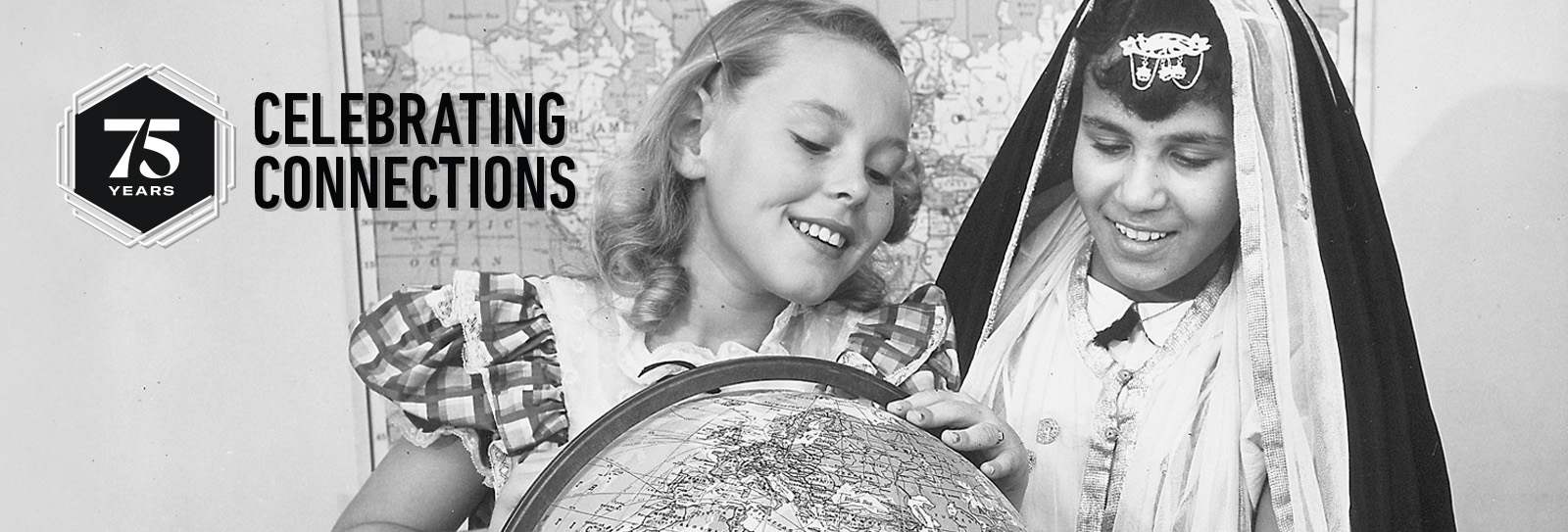
Two cultures, one world. Sixth-graders Susan Kelly, an American from Wyoming, and Fardah Sowayigh, a Saudi from Dhahran, point out where they each are from—some 11,200 kilometers (7,000 miles) apart—on a globe at an Aramco school in Dhahran. The photo was taken in 1952 by company photographer T. F. Walters for AramcoWorld and represents not only their new connection but the greater relationships between Saudis and expatriates at the company.
Making positive connections has been the mission of AramcoWorld since its first edition 75 years ago. In the words of former Aramco President Bill Moore in Volume I, No. 1: “We hope this publication will enable us to get better acquainted with ourselves.” While early editions contained much community and company news for employees, from its first decade, AramcoWorld also published stories of cultural interest—seeking out the histories, achievements and ideas from around the globe that remind us we are all truly connected. As this calendar shows, AramcoWorld’s editors have always understood the importance of showcasing connections through photography. These dynamic images of people engaging with food, music, art, history, science and more, bring our readers closer to people and places near and far.
Our 75th anniversary marks a celebration of these connections—and the stories yet to be told. We hope to have sparked your curiosity over the years, ultimately to make the world feel a bit smaller. Connections. Stories. Cultures. That’s been our focus for 75 years. And that’s exactly how we will continue to build our legacy.
We hope you have a blessed 2024.
—AramcoWorld Editorial Staff
In this calendar, the caption for each month’s image includes the AramcoWorld story headline and edition in which it was published. The photos highlight the commitment of the company and its photographers to show positive interconnections among people from various cultures. AramcoWorld continues that tradition 75 years later.












You may also be interested in...

Covering 75 Years of History
History
Cover stories that bridge the past and present offer insights into humanity’s common ground. From archeology to historical objects, people, places and more we share connections to one another.
America’s Arabian Superfood
Food
History
In recent years in the United States, dates have been trending as a nutrient-dense, easily transportable source of energy. Nearly 90 percent of US-grown dates are from California’s Coachella Valley. Yet the date palm trees from which they are harvested each year aren’t native; they were imported from the Arab world in the 1800s. Over the years, they have become a part of Coachella’s agricultural industry—and sprouted Arab-linked pop culture.
History in Objects: Jeweled Bracelet, an Emblem of an Empire
Arts
History
A 1,500-year-old gem-encrusted Byzantine bracelet reveals more than just its own history; it symbolizes an empire’s narrative.
